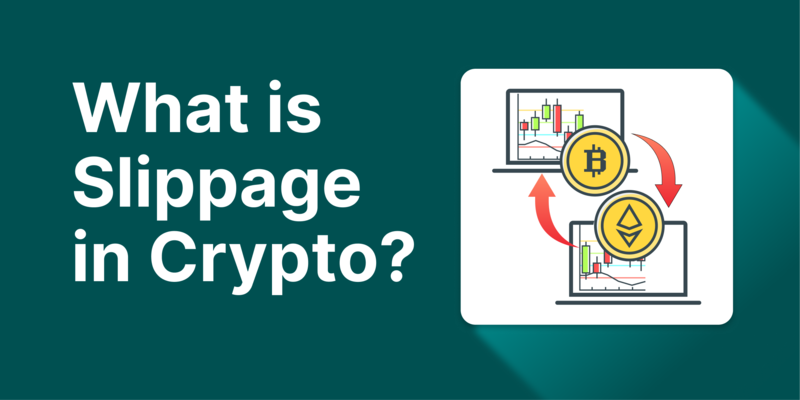Slippage in Crypto Trading: What It Is and How to Minimize It
In the fast-paced world of cryptocurrency trading, every millisecond counts. Traders often experience a phenomenon known as slippage, where the price at which they intend to execute a trade differs from the actual execution price. Slippage can be either positive or negative, meaning traders may either gain or lose due to the price difference.
Understanding slippage is crucial for anyone actively trading crypto, as it can significantly impact profitability. This article explores the mechanics of slippage, the key factors that cause it, and the best strategies to minimize its impact.
What is Slippage and Why Does It Happen?
Slippage occurs when there is a discrepancy between the expected price of a trade and the final execution price. In crypto markets, this is a common occurrence due to high volatility and liquidity fluctuations.
When traders place orders, particularly market orders, the trade executes at the best available price. However, if the price moves during order execution, the trader may receive a different price than initially expected. This price movement is what defines slippage.
Types of Slippage:
- Positive Slippage: The trade executes at a more favorable price than expected, resulting in cost savings or increased profits.
- Negative Slippage: The trade executes at a worse price than intended, leading to higher costs or reduced profits
Causes of Slippage in the Crypto Market
Several factors contribute to slippage in cryptocurrency trading:
- Market Volatility: Cryptocurrencies are known for their extreme price swings. Rapid fluctuations can cause order execution delays, leading to slippage.
- Liquidity Issues: Liquidity refers to the ease of buying or selling an asset without affecting its price. Lower liquidity means fewer buyers and sellers, increasing the likelihood of price deviations.
- Order Size: Large trades can significantly impact price movement, especially in markets with low liquidity. If there aren’t enough orders to match the trade at the expected price, the order will execute at progressively worse prices.
- Network Congestion: On decentralized exchanges (DEXs), high network activity can delay transactions, causing slippage between the intended and executed prices.
- Execution Speed: In volatile conditions, even slight execution delays can lead to price shifts, affecting the trade outcome.
How Does Slippage Work in Crypto Trading?
Slippage can occur in both centralized and decentralized exchanges. Let’s consider an example:
A trader places a market order to buy Ethereum at $1,800. However, due to a sudden price fluctuation, the order executes at $1,820 instead. This results in negative slippage of $20 per ETH.
Similarly, if the price had dropped to $1,780 before execution, the trader would have benefited from positive slippage, securing a better price.
Minimizing Slippage in Crypto Trading
While slippage is an inherent part of trading, certain strategies can help reduce its impact:
1. Use Limit Orders
Unlike market orders, limit orders specify an exact price at which a trade should execute. This ensures traders only buy or sell at their desired price, eliminating unexpected slippage.
2. Trade During High Liquidity Periods
Trading when markets have high liquidity, such as during peak trading hours, reduces the likelihood of slippage. More participants in the market ensure better order matching and price stability.
3. Choose Reliable Exchanges
Using exchanges with high liquidity and advanced order-matching systems can help minimize slippage. Centralized exchanges (CEXs) with deep order books are often more efficient in executing trades at expected prices.
4. Adjust Slippage Tolerance
Some trading platforms allow traders to set slippage tolerance, which defines the maximum acceptable price deviation. This is particularly useful for automated trades and decentralized exchanges.
5. Break Large Orders into Smaller Trades
Executing large trades in segments instead of placing a single large order prevents sudden price movements that could lead to high slippage.
6. Use Layer-2 and Optimized Networks
On-chain transactions on decentralized exchanges can suffer from network congestion. Trading on Layer-2 solutions like Arbitrum or Optimism, or using networks with low gas fees, can improve transaction speeds and reduce slippage.
7. Pay Higher Gas Fees (For DEX Traders)
On decentralized exchanges, paying a higher gas fee ensures faster transaction processing, reducing the risk of execution delays and potential slippage.
The Bottom Line
Slippage is a common challenge in cryptocurrency trading, but understanding its causes and implementing the right strategies can help mitigate its impact. Whether trading manually or using automated bots, minimizing slippage can lead to more efficient trade execution and improved profitability.
By leveraging limit orders, choosing high-liquidity trading periods, optimizing order sizes, and using Layer-2 solutions, traders can navigate the market more effectively while reducing unexpected price variations. Being aware of slippage and adjusting strategies accordingly is essential for success in the fast-moving world of crypto trading.
🔍 Get more insights into the evolving AI and tech landscape with MINTALPHAA.
🎙️ Stay updated on the latest crypto and tech trends through our Spotify podcast.
